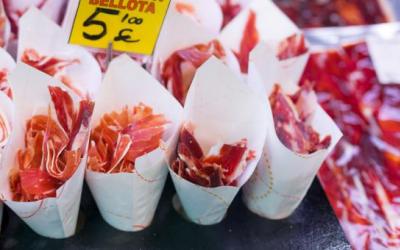Russia is on the verge of a pork overproduction crisis. What does this mean and who is affected?
Overproduction, falling domestic demand and EXPORT sequestration are the main problems of the MEAT industry this season. it looks like only government measures to support state employees and pensioners can save the situation.
The position of Russian pork producers is seriously deteriorating. Three factors influence the situation - production growth, a decrease in exports amid logistics difficulties due to the geopolitical situation and tightening Western sanctions, as well as a decrease in domestic demand due to falling incomes of the population, Kommersant writes.
The National Union of Pig Breeders (NSS) has prepared a forecast until the end of the year, according to which, under a negative scenario, the average annual wholesale pork prices may decrease by 5-10%. Whereas in 2021, the average annual meat prices increased by a quarter - up to 124.8 rubles. for 1 kg. Prices will be affected by the growth of pork production, said Yury Kovalev, general DIRECTOR of the NSS. As a result, the market is waiting for a glut.
Pork output in 1H 2022 will increase by 6.4% in live weight, to 2.7 million tonnes yoy. In total, according to the results of the year, the increase in production is expected at the level of 4% - approximately 5.1 million tons of pork.
The source of the newspaper in the industry added that difficulties with exports also negatively affect the market. First, the strengthening of the ruble reduced the competitiveness of Russian pork. Secondly, the possibility of supplying products to the markets of CHINA and Vietnam has practically vanished, since domestic pork production has fully recovered in the countries. Thirdly, shipments are affected by logistical problems, exacerbated in the spring due to geopolitics.
These trends are also confirmed in the Union: at the end of the year, the total surplus will be up to 250 thousand tons of pork, which will remain on the domestic market.
However, demand will not be able to cover overproduction. Moreover, it is likely that it will even decrease due to the situation with consumer incomes. According to the forecasts of the Ministry of Economy, the reduction will be 6.8%.
Indexation of public sector salaries and social benefits can support pork consumption, says Sergei Yushin, HEAD of the National Meat Association. He appeals to the statement of the Prime Minister of the Russian Federation Mikhail Mishustin, who announced the indexation from June 1 to 10% of the minimum wage (minimum wage), the living wage and pensions for non-working pensioners. The measure will affect more than 50 million Russians, and the total amount of indexation will be more than half a trillion rubles.
Industry associations agree that if the glut of the pork market continues in 2023-2024, this will entail the exit of enterprises with low efficiency from the market. At the same time, large companies can freeze the implementation of new projects. Additional complexity in the future will be caused by the factor of technological dependence of Russian meat processing enterprises on imports. Up to 80% of equipment and its components are produced in the EU.
Major pork producers, including the Cherkizovo Group, Rusagro Group and Prodo Group, have not yet commented on the situation on the market.




























































